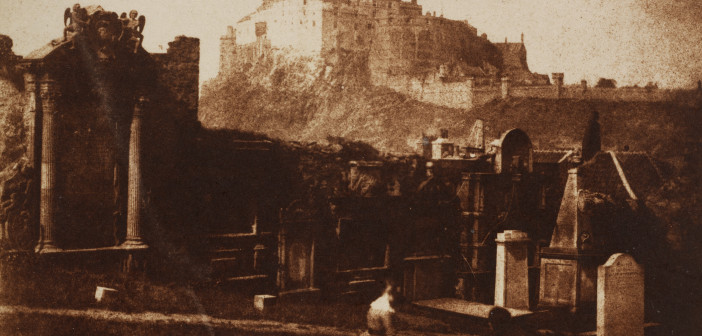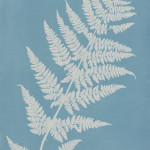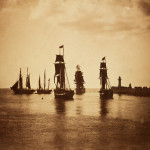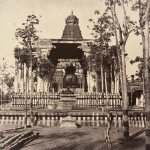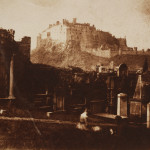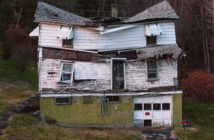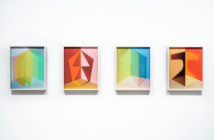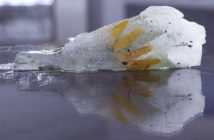Photography is arguably the most popular medium for visual expression in the contemporary world. With the ever-increasing availability of digital cameras, billions of people have access to photographic technology. Millions of photographs are shared daily on social media detailing the minutiae of daily life. The status of photography today makes the medium a potent subject for historical inquiry. Early Exposures: 19th Century Photography from the Collection, on view at the RISD Museum through July 19, 2015, gives viewers the opportunity to see photography as it once was: precious, scientific, and exclusive. The show is an essay on the trials and travails of photography’s growing pains in its shift from scientific curiosity to burgeoning art medium. It tells many stories, laying bare the varying philosophies of individual photographers. The images included in the show are richly diverse in their subject matter, technique, style, and ultimately in their aesthetics. Taken together, the collection testifies to the variety of early photography. More tellingly, it conveys the flaws of photographic experimentation. But ultimately, it provides an exceptionally clear portrait of what mattered to the earliest fine art photographers.
When photography debuted in its modern form in the mid-1820’s it was a largely scientific endeavor. Early Exposures contains tantalizing glimpses into the strange puberty of the medium: the awkward years when academic and painterly influences forced photography to remain in the shadow of fine art. The camera obscura had long been used by artists capture images, but with the advent of photography, it was finally possible to permanently fix these images onto a surface. Many artists initially saw photography as a crude tool or technological curiosity, but others approached the new process with a deep interest in creative experimentation. In many ways, these nineteenth century pioneers find their counterparts in the new media artists working in video, performance, digital, and web based artwork today.
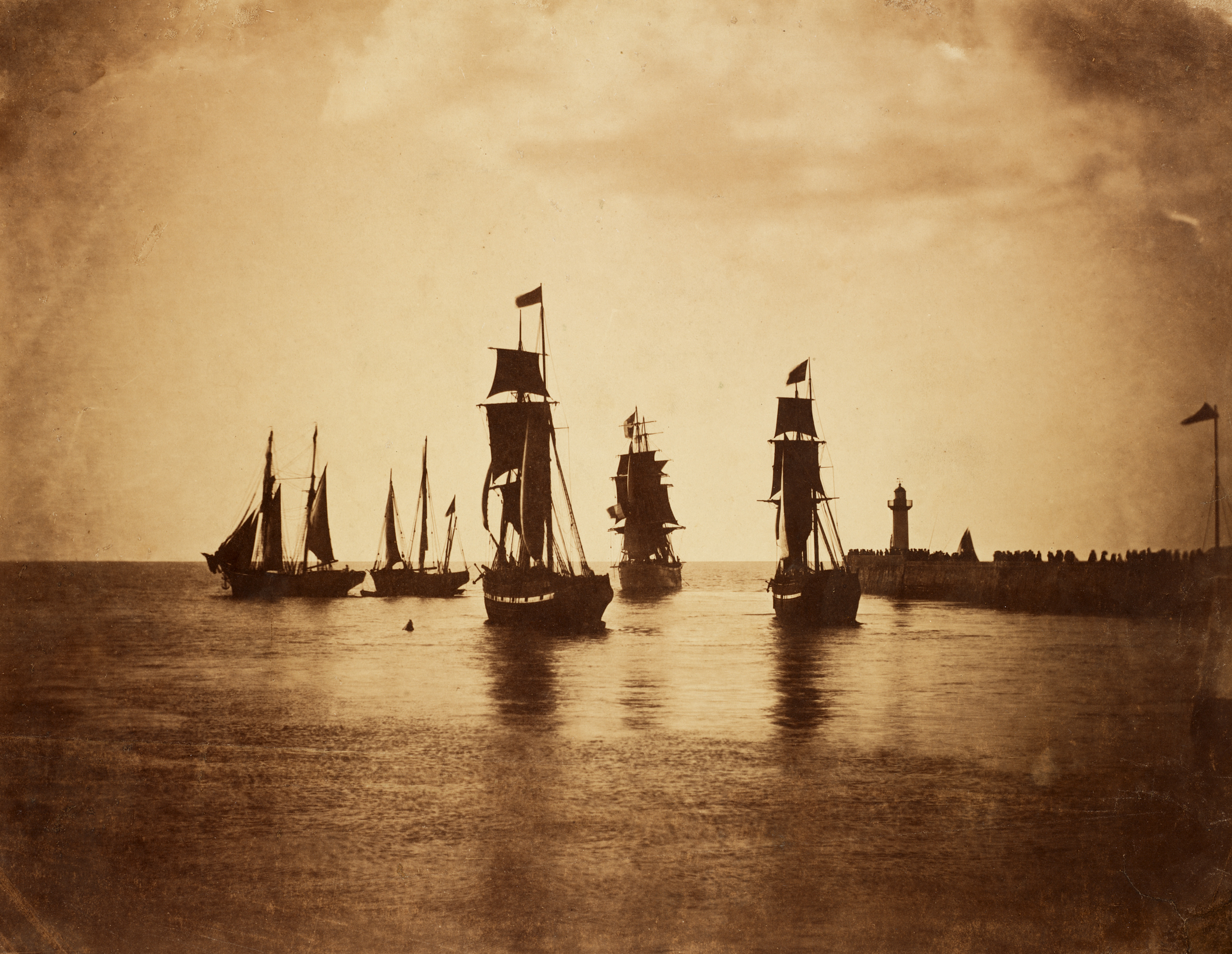
Gustave Le Gray, Ships Leaving the Port of Le Havre, ca. 1856-1857. Museum purchase; bequest of Lyra Brown Nickerson, by exchange. RISD Museum, Providence, RI.
The show is peppered with dark, dramatic images commonly found in painting and sculpture from the romantic age: this is conveyed by a small, intimate photograph by Robert Adamson and David Octavius Hill. Edinburgh Castle from Greyfriars (1843-47), is an image that is both temporal and spiritual. A female figure sits with her back to the viewer in a haphazardly arranged graveyard. A castle can be seen foggily in the distance, hinting at the hereafter. Ships Leaving the Port of La Havre by the French photographer Gustave LeGray is similarly romantic in its subject matter. Here, the artist used technical innovations to manipulate the image in order to increase the drama of the scene. LeGray used two glass plates, exposed at separate times, to depict silhouette of two ships leaving port. Ultimately the photograph acts as a metaphor for life, death, and the journey between the two. By using photography to explore metaphysical questions, artists sought to elevate photography above the level of a mechanized process to a respected art form.
Other photos in the show are less sentimental and more scientific, reflecting photography’s ability to capture exquisite details of nature, architecture, and daily life- details largely unseen before the advent of photography. One such image by Anna Atkins is a compelling cyanotype of hay-scented buckler fern. Lastroea Foenisecii (1849) was created by placing leaves on sensitized paper and exposing them to the sun. The image depicts the fern in pale and dark blues with scientific exactness. It becomes something of a fossil record: clean, refined, and without comment.
Photography’s assumed ability to capture “the truth” meant that it was seen as a valuable tool in recording everyday life, and was often used to bring a sense of the East to Western audiences who were deeply curious about faraway places. With the scientific power of the camera, artists were able to capture images of areas formerly subjugated to painterly conventions that took advantage of, and contributed to, the ignorance of their viewers. These photographs heped to break barriers established by generations of painters who turned the Middle and Far East into places of mysterious and exciting exoticism. Linnaeus Tripe’s photograph, Tanjore, Great Pagoda, Great Bull as Viewed on Passing Through the Last Gopurum, (1860) was included in the 1860 album Photographic Views of Tanjore and Trivady and depicts Nandi, sacred animal of the Hindu god Shiva from the entrance of the Brihadeeswarar Temple in Thanjavur. The image is richly detailed and gives foreign viewers an ability to see the architecture of southern India, where Tripes was official photographer for the Madras Government. Tripes’ photograph aims to convey the reality of a place with clarity and seriousness. It is less artifice than science, though his position as a hired hand of the colonial government should give the viewer some pause. The places depicted in photographs by artists such as Tripes were largely denuded of fictional elements, yet they still remained engaging and thrilling for Western viewers of the time.
In addition to these standout pieces, a case of smaller works in the exhibition is filled with intimately scaled images of loved ones and the occasional household pet. These pocket-sized works show another side of early photography: personal, accessible, and mobile applications of the medium that are deeply familiar to contemporary audiences. The capabilities of photography to record memories must have been mesmerizing in the nineteenth century. While the survey of images in Early Exposures testifies to the conceptual issues at play in early photography, the smaller household images give the viewer a sense of the impact of photography on daily life.
In a 1951 article in Infinity Magazine, photographer Berenice Abbott poignantly stated, “photography can never grow up if it imitates some other medium. It has to walk alone; it has to be itself.”[1] This statement, made more than a century after many of the images in the RISD show were taken, illuminates the central problem photographers have faced from the beginning: how can photography be its own medium? This question is more relevant today than ever. With the rise of the digital revolution, new media are constantly developing, and the answers early photographers found to bring their medium into the realm of fine art are deeply relevant and potent today. Early Exposures is both intimate and encyclopedic at the same time. By cataloging early advances in the field and exploring the social significance of these images, this compelling show cultivates a more nuanced view of the creative process in the purest way possible; by examining the early development of an art form.
- Anna Atkins, Lastroea Foeniseccii, ca. 1854. Museum purchase. RISD Museum, Providence, RI.
- Gustave Le Gray, Ships Leaving the Port of Le Havre, ca. 1856-1857. Museum purchase; bequest of Lyra Brown Nickerson, by exchange. RISD Museum, Providence, RI.
- Linnaeus Tripe, Tanjore, Great Pagoda, Great Bull as Viewed on Passing Through the Last Gopurum, 1860. Mary B. Jackson Fund. RISD Museum, Providence, RI.
- Robert Adamson and David Octavius Hill, Edinburgh Castle from Greyriars, 1843-1847. Mary B. Jackson Fund. RISD Museum, Providence, RI.
1. Berenice Abbott, "It Has to Walk Alone," Infinity vol. 7 issue 11 (1951) 6-11.
Early Exposures: Images From the Infancy of Photography is on view at the RISD Museum in Providence, RI through July 19 2015. Click here to visit the museum's website.

